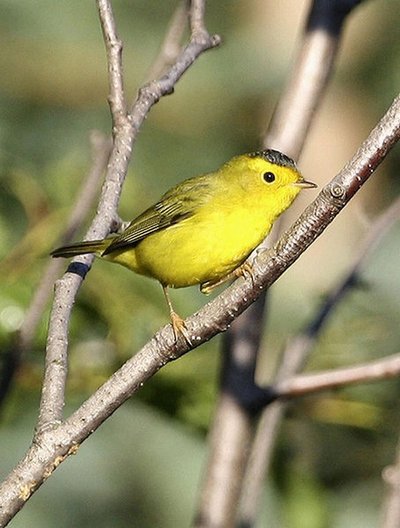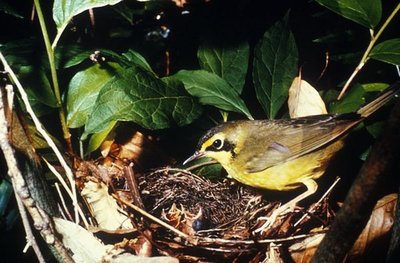August 30, 2010
Army ant raids help birds survive the winter in Costa Rica
Note: Video of an army ant raid is available here.
The health of some migratory birds that spend part of their year in US forests may depend in part on the existence of colonies of army ants that inhabit the foothills near Monteverde, Costa Rica.
This is one of the conclusions of a study recently published in the Wilson Journal of Ornithology. Sean O’Donnell, professor of psychology at the University of Washington and the paper’s primary author, has found that army ants occupy an important ecological niche in the montane forests of Costa Rica, and that migrating birds rely on these ants to flush out a portion of their food supply.
O’Donnell’s most recent research has identified eleven species of migratory birds — thrushes, warblers, and vireos — that appear to benefit from a relationship with army ants. Because these results are based on a limited sample, he suspects that additional research will identify other species.
Army ants live in colonies with populations in the millions. When they sweep through an area, they resemble a moving carpet of ants that can be as much as 30 feet wide, capturing insects, spiders and small vertebrates. They rest in the evenings, building a living nest, known as a bivouac, with their bodies.
When the ants are on the move, they flush out other insects which are eaten by birds. “It’s a little like animals fleeing a wildfire,” O’Donnell says. Researchers who have observed army ants in tropical lowlands have known for years that there are resident bird species, known as obligate antbirds, that rely exclusively on army ants for unearthing their food supply. When deprived of army ants, these obligate antbirds go extinct locally.
O’Donnell and his colleagues have found that, at higher elevations, the army ants are more abundant than many scientists had expected. But obligate birds don’t follow them out of the lowlands. Some resident montane birds appear to have taken on part of the obligate antbird niche in their absence. The researchers found that some local, resident birds would fly to visit the army ants’ bivouac in the morning and evening, checking on the ants’ activity. They would then follow the swarming ants, picking up insects and other small creatures fleeing from the advancing army. Unlike obligate birds, these birds rely on the ants for only a portion of their food. O’Donnell has observed 11 species of birds exhibiting bivouac-checking behavior, although he believes there are likely to be more.
“We observed some of the birds vocalizing as they were checking the bivouacs,” O’Donnell says. “We don’t know yet if they were communicating with other birds of their species, to alert them to the possibility of food. They also could be trying to draw birds of other species to the area, thus decreasing the likelihood that any one bird would be the victim of a predator.”
Although migrant birds did not check bivouacs, they were frequently present at army ant raids, possibly relying on signals from local birds. “It’s likely the army ants are important to the over-wintering survival of some kinds of migrating birds,” which are found in great abundance in foothill forests, O’Donnell says
Close relationships between species, like birds attending army ant raids, are common in tropical areas, he says. “There are so many species and there is such great competition, that one solution is to find another species with which to work as a partner.”
O’Donnell believes there is a spectrum of connections between army ants and birds. In the lowlands, the obligate birds rely exclusively on army ants for helping them find food. At higher elevations, there are resident birds who regularly observe army ant bivouacs to help them unearth a portion of their food supply. Then there are migrant birds, who show up frequently at army ant raids — relying on cues that could be hard-wired genetically, learned during the course of growth and development, or passed from parent to young.
“It’s clear that the army ants are a focal point in the region’s ecology, as far as birds are concerned,” O’Donnell says. The good news, from a conservation point of view, is that many of the parts of the ants’ and birds’ habitat near Monteverde are protected. “Deforestation has effectively been prevented in many crucial areas near Monteverde,” he says.
But climate change could present even greater challenges. As the forests experience warming, some species are moving to higher elevations. It’s not clear that all elements of the ecological web –vegetation, for instance — will able to adapt to relatively fast-changing conditions. If climate change influences the army ants, those effects may cascade to both resident and migrant birds.




